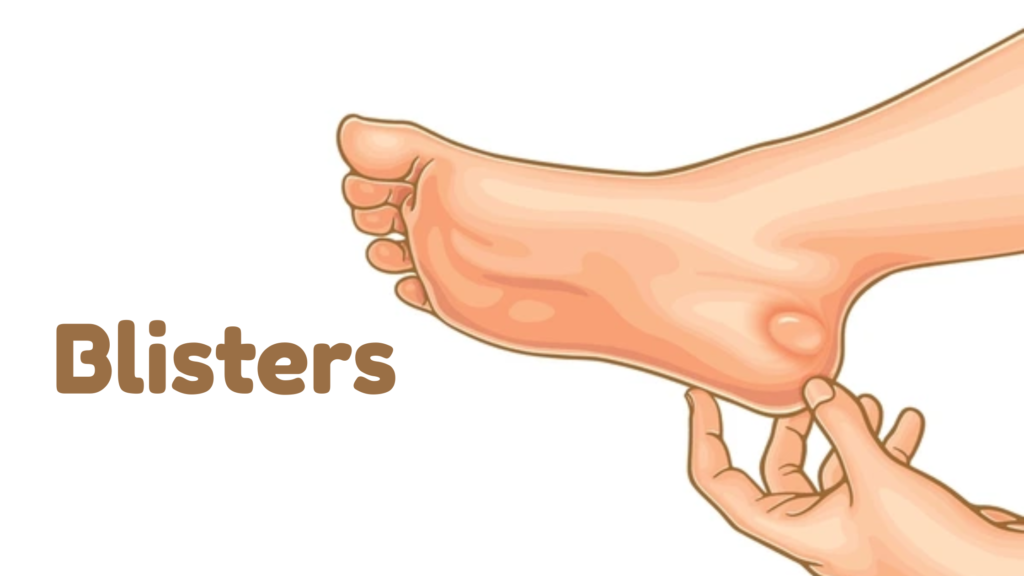Skip to contentWhat Are Blisters?
- Fluid-filled bubbles on the outer layer of skin
- Filled with clear fluid (serous fluid), but sometimes blood or pus if infected
- Act as a protective cushion to allow healing underneath
🔍 Common Causes:
- Friction or rubbing (from tight shoes or repetitive motion)
- Burns (thermal, chemical, or sunburn)
- Frostbite
- Allergic reactions
- Infections (like chickenpox or herpes)
⚠️ Symptoms:
- Raised, fluid-filled bump on the skin
- Redness or irritation around the blister
- Pain or tenderness
- Sometimes itching or burning before blister appears
🏠 Treatment:
Do:
- Leave the blister intact to protect underlying skin
- Keep it clean and dry
- Cover with a sterile bandage or blister pad
- If the blister is large or painful, drain it carefully with a sterilized needle (do not remove the skin flap)
- Apply antibiotic ointment if opened
Don’t:
- Pop or peel the blister skin unnecessarily (risk of infection)
- Pick at the blister or expose it to dirt
🛡️ Prevention Tips:
- Wear properly fitting shoes and socks
- Use moisture-wicking socks
- Apply lubricants or powders to reduce friction
- Break in new shoes gradually
- Use protective pads or tape on hotspots
When to See a Doctor:
- Signs of infection (increased redness, warmth, pus, red streaks)
- Large, painful blisters
- Blisters caused by burns or chemical exposure
- Blisters in people with diabetes or poor circulation
